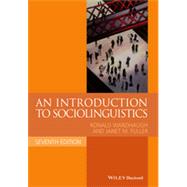Ronald Wardhaugh is Professor Emeritus in the Department of Linguistics at the University of Toronto. He is the author of a number of books, including Proper English (Wiley-Blackwell, 1998) and Understanding English Grammar, 2nd Edition (Wiley-Blackwell, 2003).
Janet M. Fuller is Professor in the Department of Anthropology at Southern Illinois University Carbondale. She has recently published two books dealing with multilingualism, discourse and identity: Bilingual Pre-Teens: Competing ideologies and multiple identities in the U.S. and Germany (2012) and Spanish Speakers in the USA (2013), and was the editor of the sociolinguistics section of the Language and Linguistics Compass (Wiley-Blackwell) from 2010–2013.








